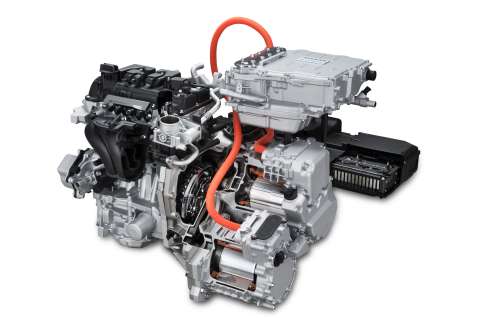The e-POWER system features full electric-motor drive, meaning that the wheels are completely driven by the electric motor. The power from a high-output battery is delivered to the e-POWER’s compact powertrain comprised of a gasoline engine, power generator, inverter, and a motor. In conventional hybrid systems, a low-output electric motor is mated to a petrol engine to drive the wheels when the battery is low (or when traveling at high speeds). However, in the e-POWER system, the petrol engine is not connected to the wheels; it simply charges the battery. And unlike a full EV, the power source originates from the engine and not just the battery.
This system structure generally requires a bigger motor and battery because the motor is the only direct source to drive wheels. This has made it hard for the automotive industry to mount the system in compact cars. However, Nissan has cracked the code and learned how to minimize and reduce weight, develop more responsive motor control methods and optimize energy management. As a result, e-POWER uses a smaller battery than the LEAF, but delivers the same driving experience as a full EV.
The benefits of e-POWER
e-POWER delivers massive torque almost instantly, which enhances drive response and results in smooth acceleration. Also, the system operates very quietly, much like a full EV. Because e-POWER relies on the engine much less frequently, its fuel efficiency is comparable to that of leading conventional hybrids, especially during around-the-town commutes. The e-POWER system allows you to enjoy all the benefits of an EV without having to worry about charging the battery.







